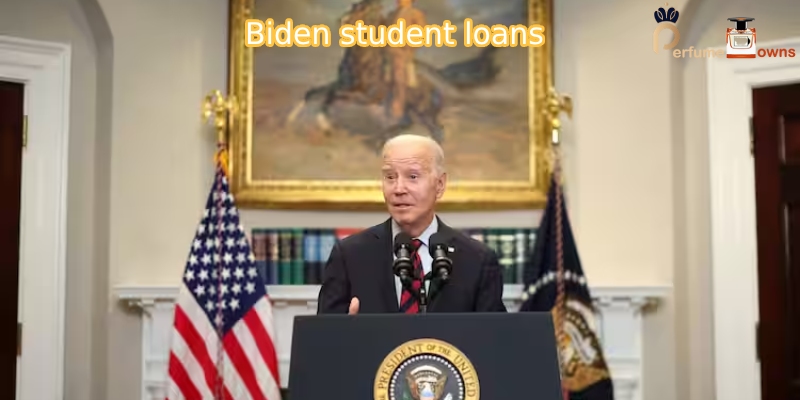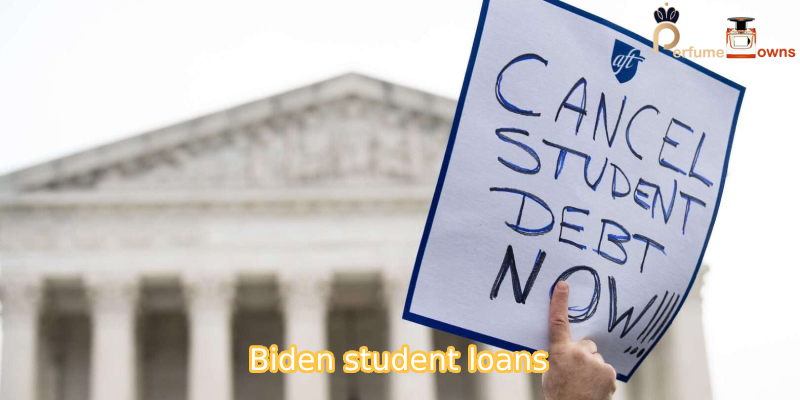Blog
How Do I Apply For Biden Student Loans?
In today’s context, higher education is not only an opportunity for personal development but also a key factor determining the economic future of each student. However, the financial burden of student debt is often a major challenge for many people. In this context, the “Biden student loans” policy has become a hot topic, promising to bring positive changes. Let us explore the details and impact of these measures on students and the economy.
What are Biden student loans?
Biden student loans are often used to refer to measures and policies related to student loans (student loans) implemented under US President Joe Biden. In this context, refers to the decisions and measures that the government and President Biden have taken to ease the financial burden of students in terms of paying student debt and providing assistance in meeting expenses. premium education fees.
These measures could include tuition discounts, debt restructuring, offering more flexible payment plans, or even relieving a portion of student debt. The goal of these measures is often to help students and alumni reduce financial pressure and make it easier for them to start their careers after graduation.

What happened to Biden student loans?
The beta site will be unveiled about a month after the Supreme Court struck down President Joe Biden’s one-time $441 billion debt relief program.
Under that initiative, borrowers with incomes under $125,000 ($250,000 for couples) would be able to qualify for up to $10,000 in federal loan forgiveness. Borrowers who received Pell Grants to pay part of their education costs may be eligible for loan forgiveness of up to $20,000.
According to the Supreme Court ruling, the Department of Education is prohibited from forgiving any federal loans under this program.
Who is eligible for Biden student loans?
After the Supreme Court rejected the debt forgiveness plan, the Biden administration established the Student Loan Relief Commission to engage in “rulemaking negotiations” over the next several months to discuss Next steps to reduce student debt. It’s unclear whether any of the new debt relief programs will have the same eligibility requirements as the first program, but the administration has indicated that it will prioritize assisting borrowers experiencing financial hardship.
Although Biden’s student debt forgiveness plan is no longer available, you may still qualify for loan forgiveness if any of the following apply:
You worked full-time in public service for 10 years and made 120 qualifying payments on your federal student loans.
You have been a teacher at a low-income school or at an educational service agency for 5 consecutive years.
You are a nurse or nursing faculty member serving a high-needs population in a critical shortage area.
You are eligible to cancel a Perkins loan.
You have suffered total and permanent disability.
You have another qualifying reason for settling your student loan, such as being defrauded by your school.
You make payments over 20 or 25 years on an IDR plan.

How do I apply for Biden student loans?
The application process for student loan forgiveness will depend on the program you pursue. Here are some steps you can take, depending on the program:
Public Service Loan Forgiveness (PSLF). To apply for PSLF, use the PSLF Helper to create and submit a PSLF & Temporary Extended PSLF (TEPSLF) application and certification to your loan servicer. Submit this form annually so your provider has a record of your progress. At the end of the 10 years, you will submit the final PSLF form to federal student loan servicer MOHELA.
Teacher loan forgiveness. Submit this Teacher Loan Forgiveness Application to your loan servicer(s). You will need your school or agency’s administrative director to complete the attestation portion of this application.
CORPS Nurse Loan Forgiveness. You can register through your account on the Health Resources & Services Administration (HRSA) website. This guide explains the process in more detail.
IDR forgiveness plan. Your loans will automatically qualify for forgiveness after you’ve been repaying them for 20 or 25 years. Contact your loan servicer about any steps you may need to take.
Discharged from hospital with total and permanent disability (TPD). Borrowers with total and permanent disabilities may have their student loans automatically forgiven. If not, you can fill out a TPD discharge application and send it to your provider. Along with your application, you will need to provide supporting documentation from the U.S. Department of Veterans Affairs (VA), the Social Security Administration (SSA), or an authorized medical professional.
Can I defer payments on my Biden student loans beyond October?
You may qualify for federal loan deferment and payment pause depending on your circumstances. Common forms of adjournment or adjournment include:
Delaying cancer treatment. If you have been diagnosed with cancer and are undergoing treatment, you can submit a request to defer payments during your treatment and for six months after your treatment ends.
Delay economic hardship. If you receive government benefits, such as welfare, work full-time but earn 150% of the federal poverty level or less, or are serving in the Peace Corps, you may qualify. lawsuit to be postponed due to economic difficulties. You can defer payments every few months, up to three years.
Procrastination in school. If you are a borrower who wants to go back to school to get another degree, such as a master’s or doctorate, you can defer payments while you’re in school and up to six months after you graduate, or drop them below part-time status.
Delay unemployment. If you lost your job and are receiving unemployment benefits, you can defer your payments for up to three years under the unemployment deferment program.

In conclusion
President Biden has made many strong commitments to ease the financial burden of students and alumni, to create more favorable conditions for them in their learning journey and career exploration. By promoting Biden student loans, we can see clearer guidance toward a future of equitable education and sustainable opportunity. However, these measures are not only the main content issue at the political negotiating table, but also an opportunity to build a society where people can freely pursue their dreams without worrying about burden of student debt.
